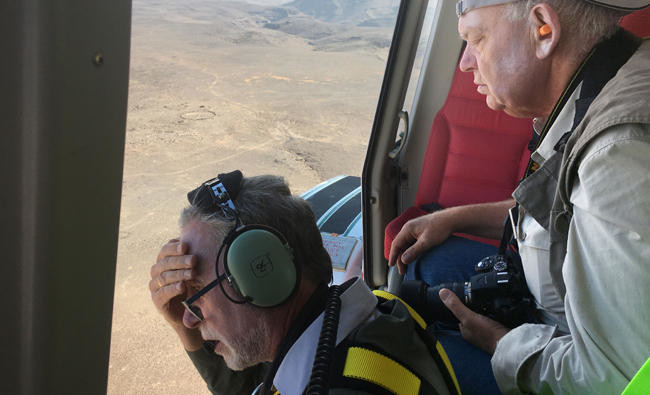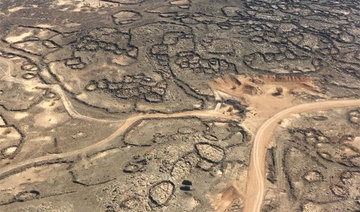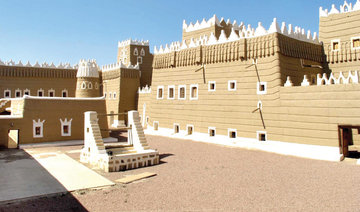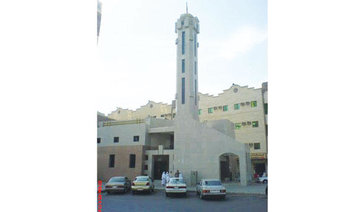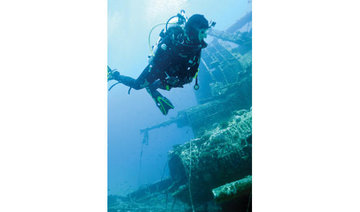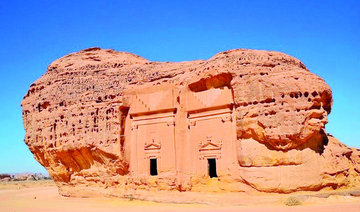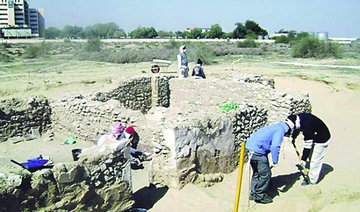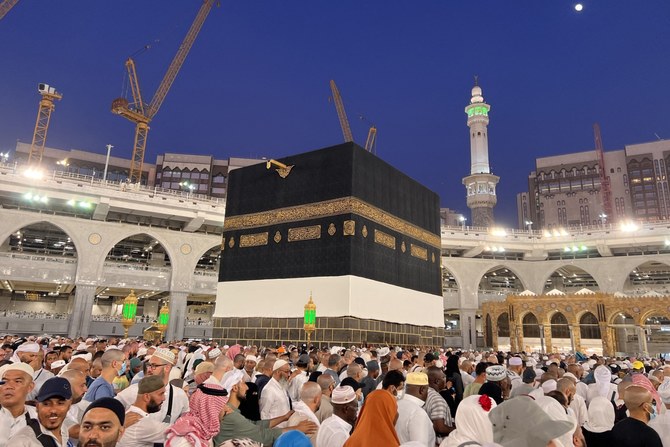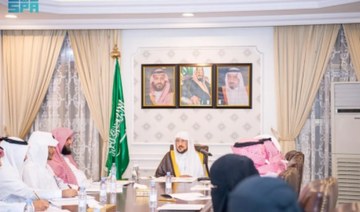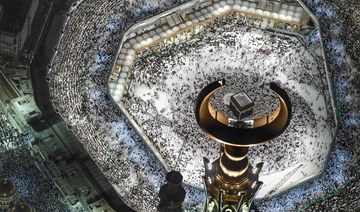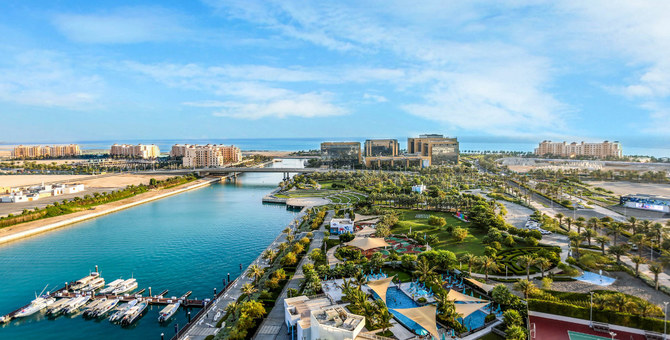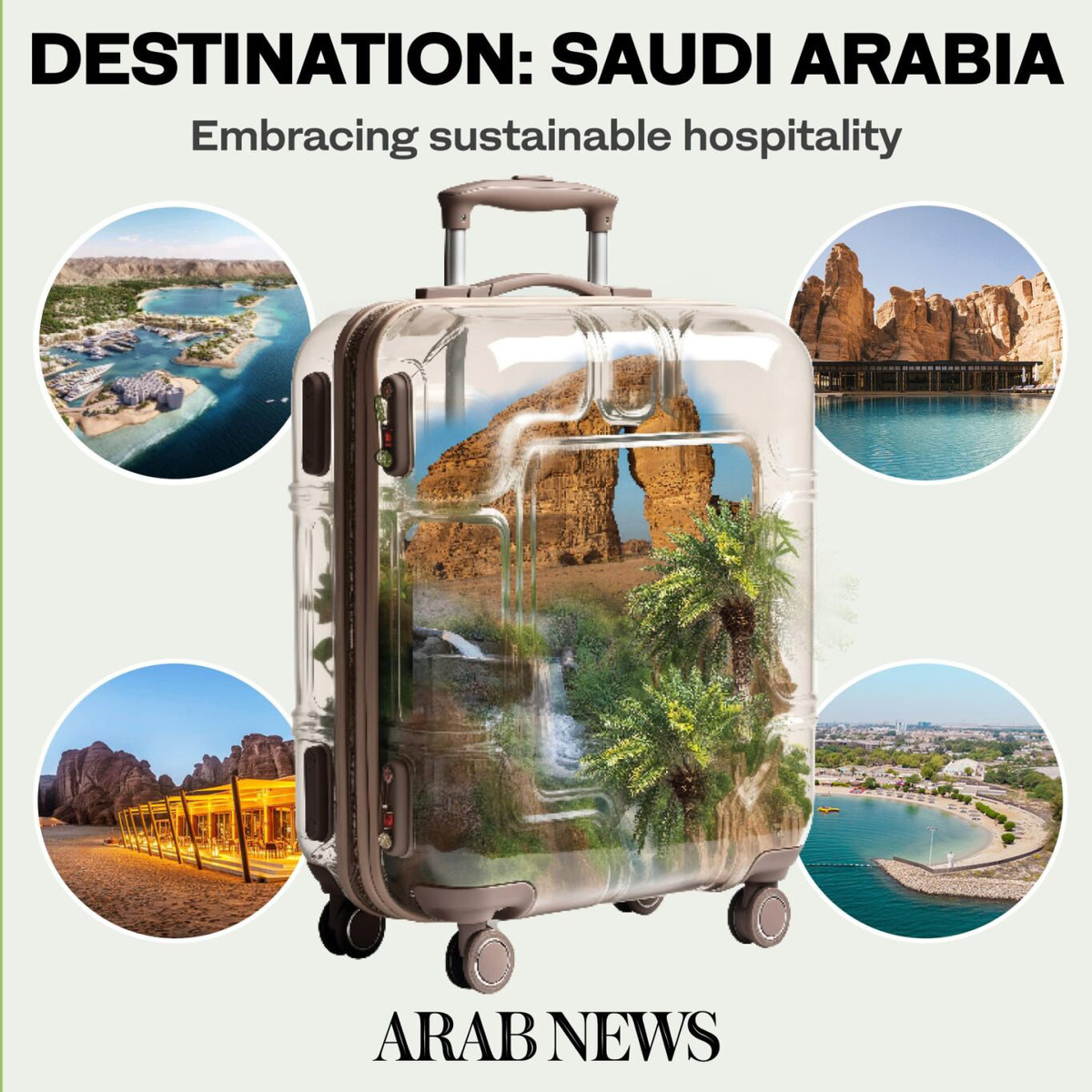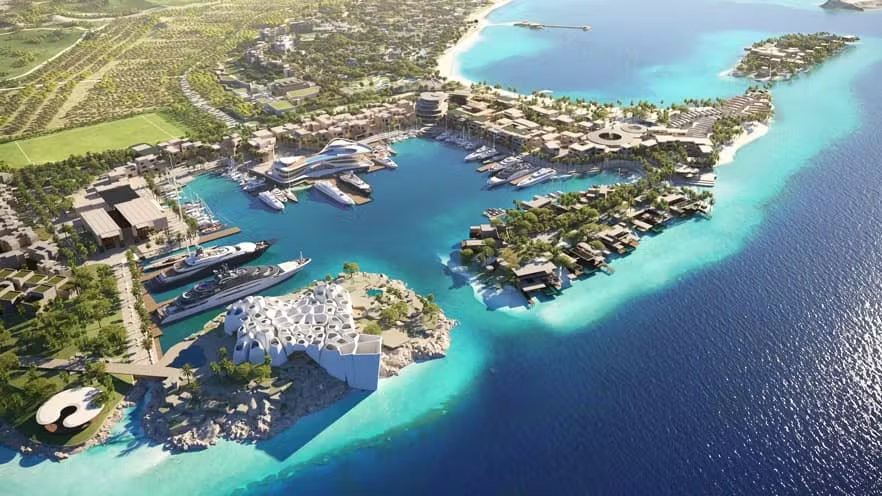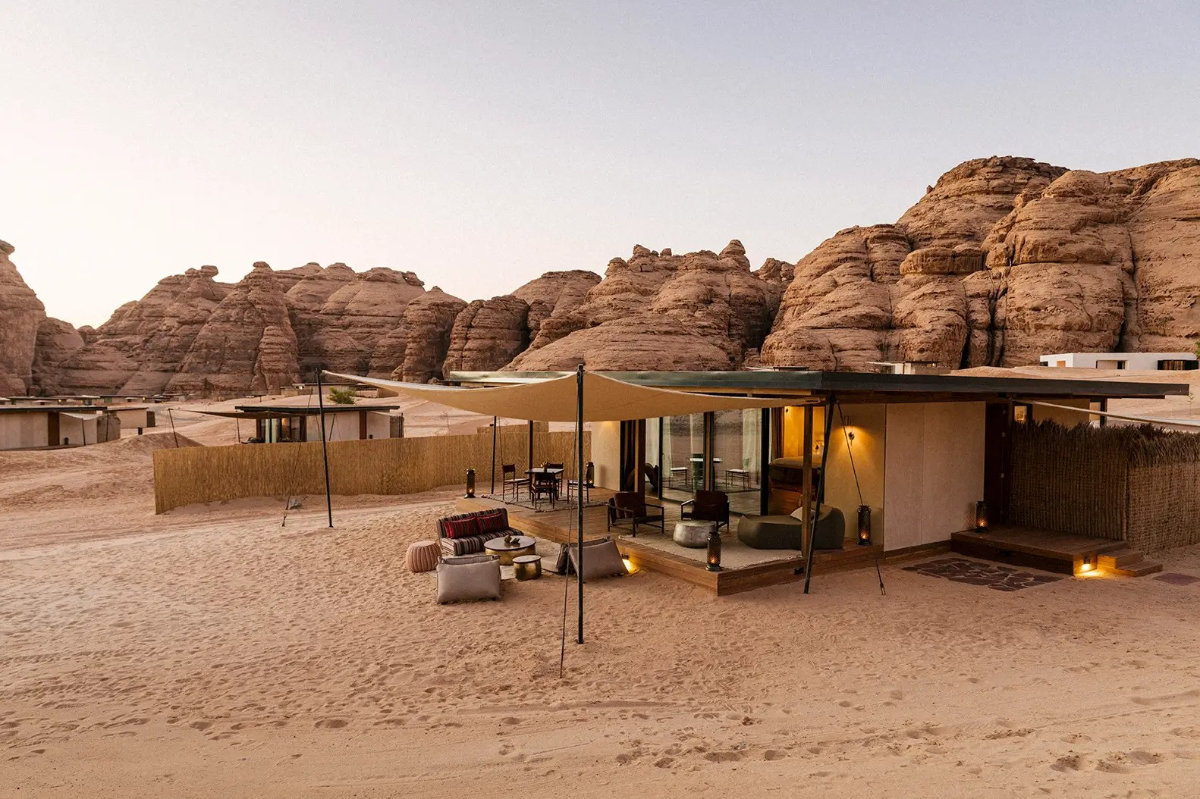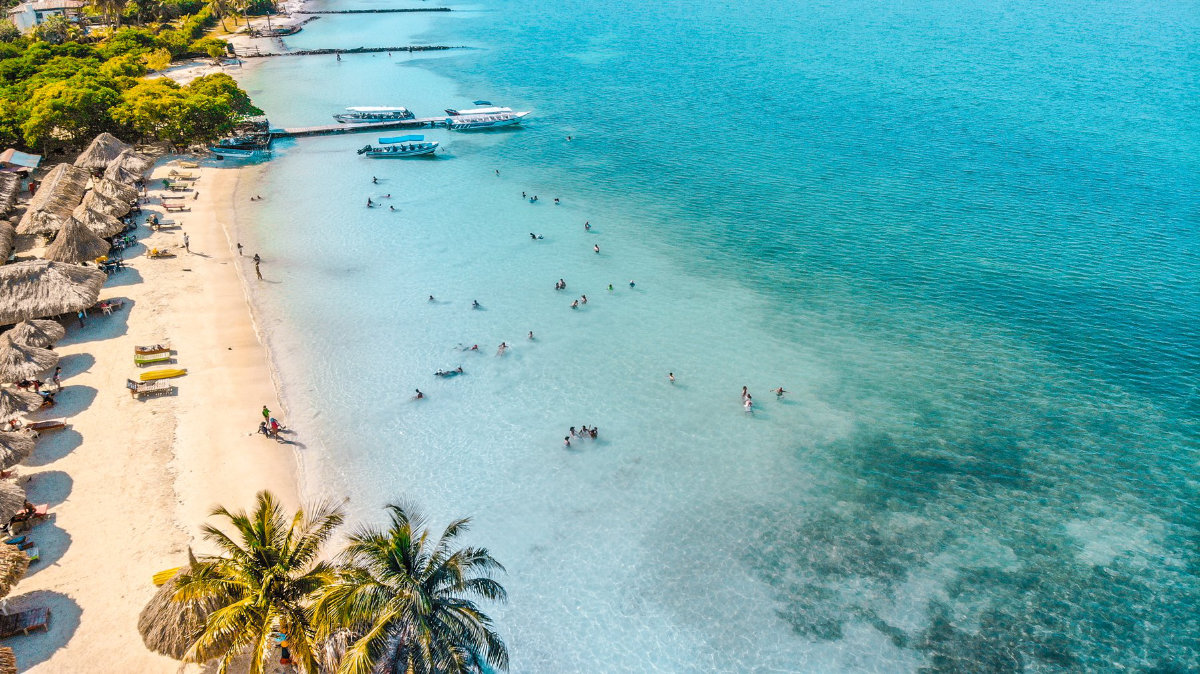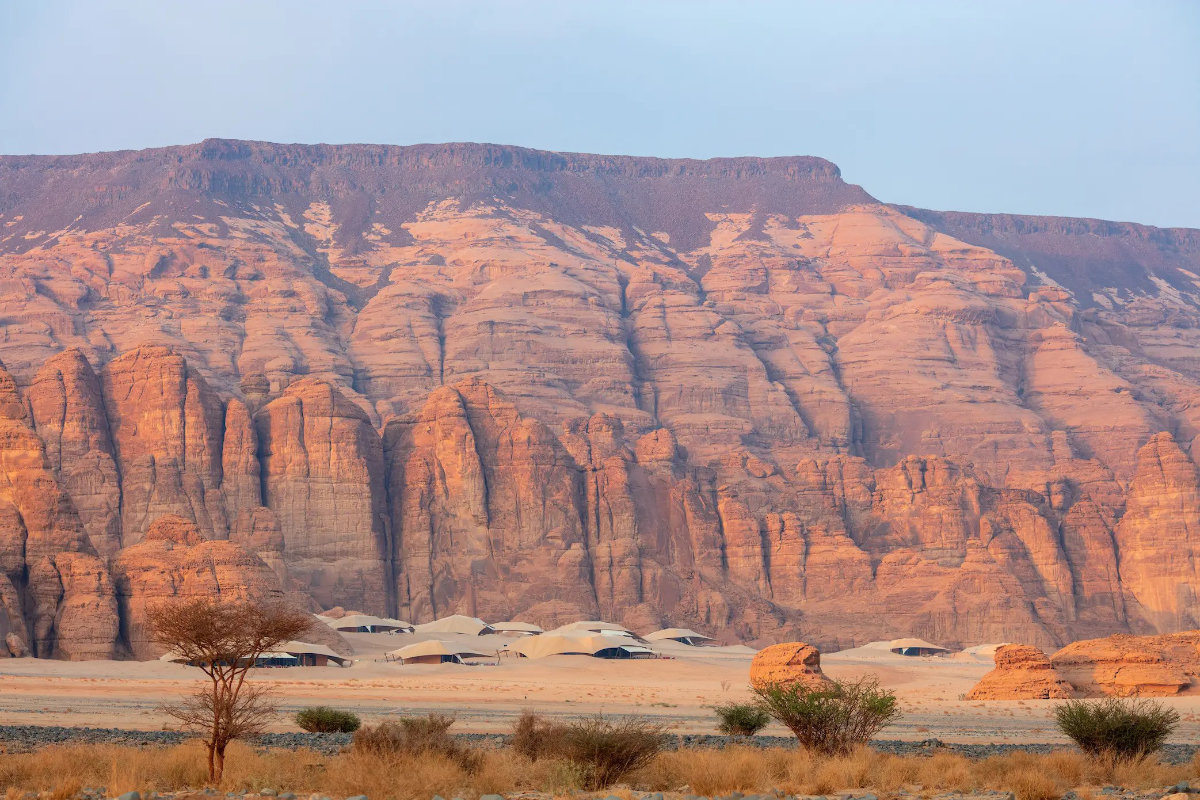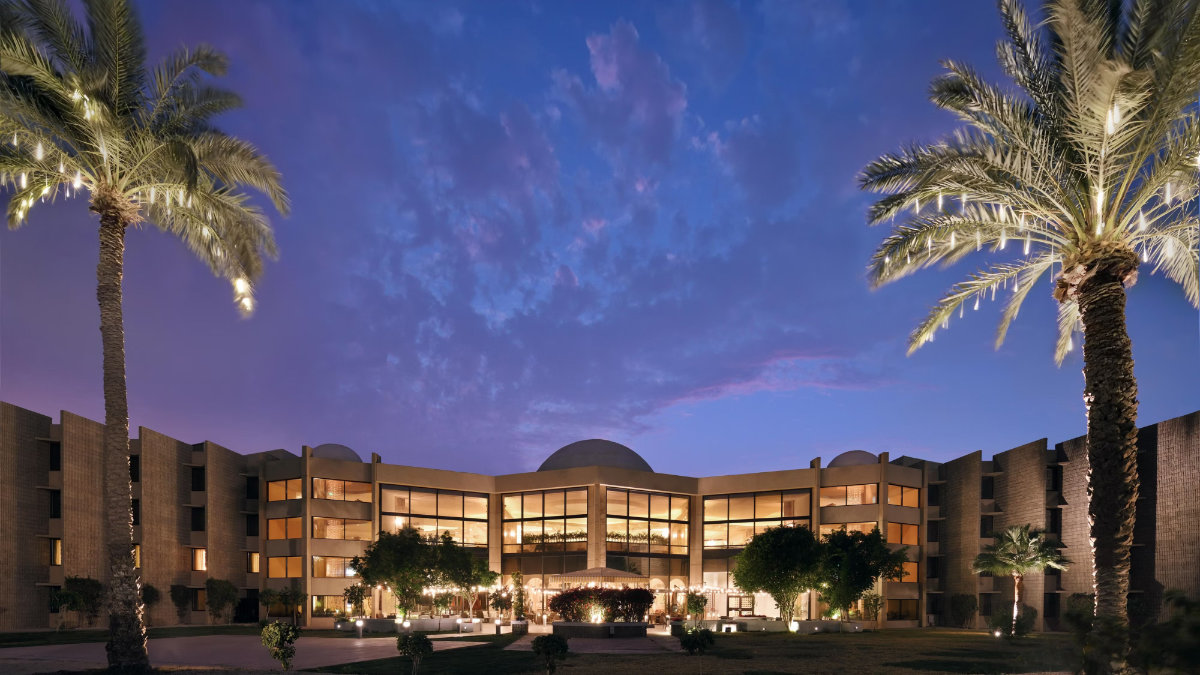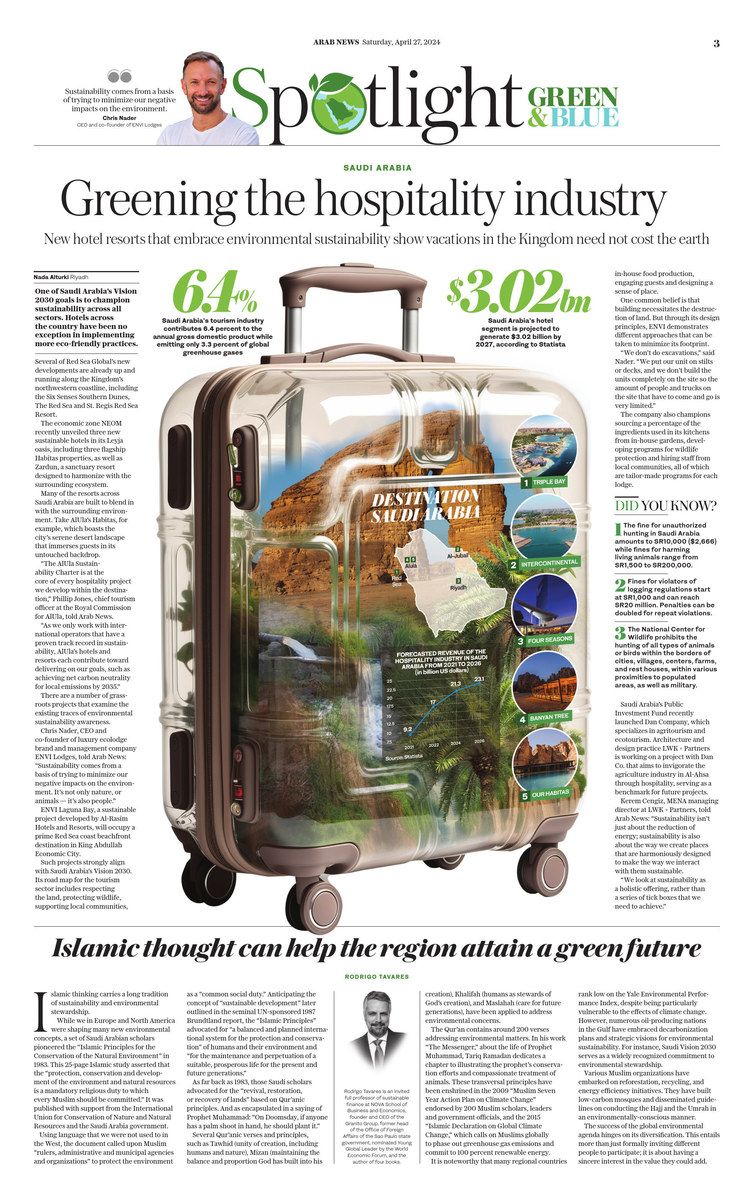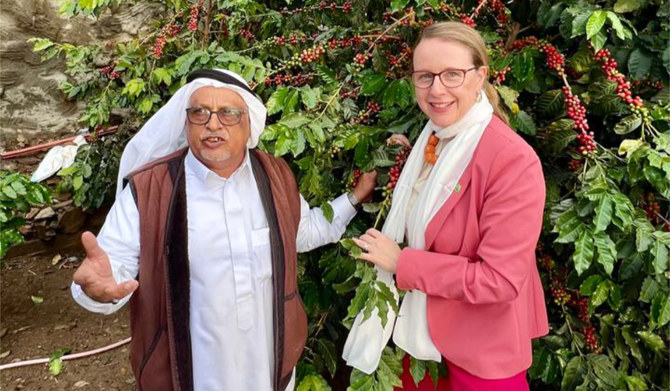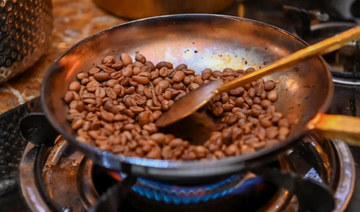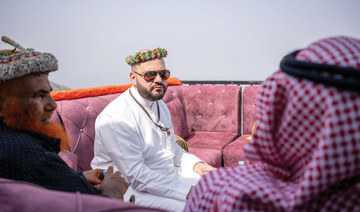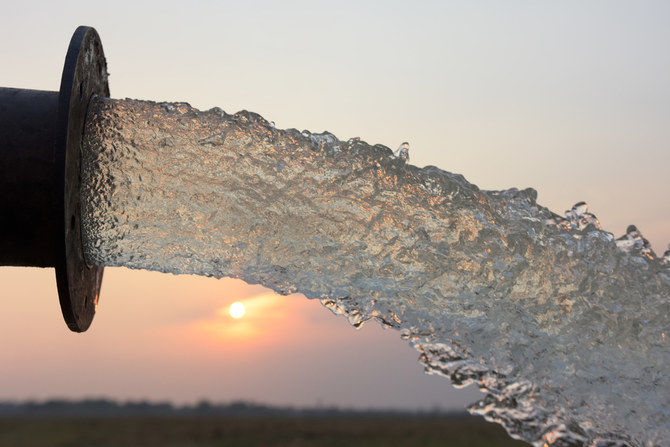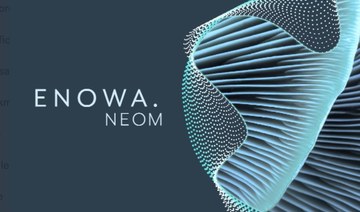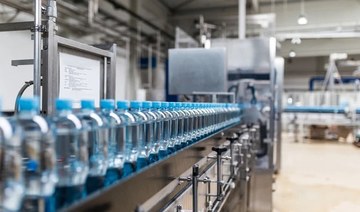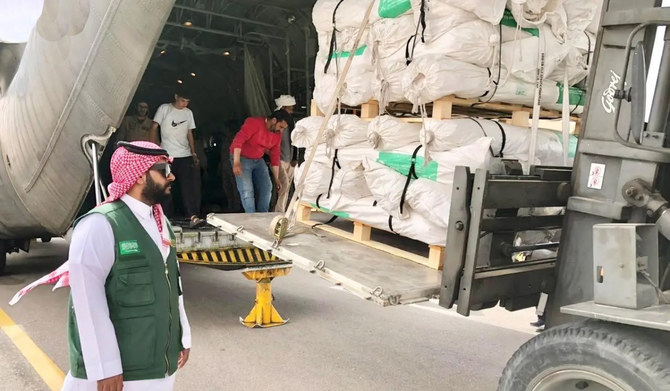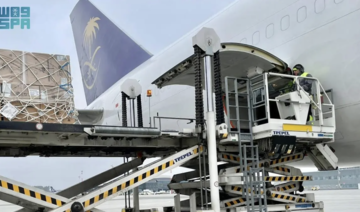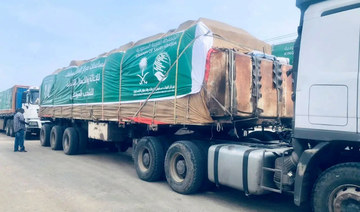RIYADH: As the helicopter hovered above the Saudi desert, David Kennedy’s eyes lit up as he glimpsed what he had been searching for: A series of ancient, mysterious stone structures atop the desolate mountains.
The archaeologist had been using Google Earth for years to explore Saudi Arabia’s vast desert plains, but it was not until last month that he visited the Kingdom in person.
“Seeing it from 500 feet is so much better” than on Google Earth, Kennedy told Arab News, which accompanied him for an exclusive view of the discoveries.
Online satellite images revealed 400 stone gates — thought to be used for trapping animals — and graves scattered across the lava fields known as Harrat Khaybar and Harrat Uwayrid.
The Royal Commission for Al-Ula invited the Australian archaeologist to Riyadh, from where he flew to Al-Ula and took aerial photographs.
“I was astonished and delighted when I got the invitation … They spoke to me on Saturday and here we are (in Saudi Arabia) on Thursday,” he told Arab News last month.
Arab News accompanied him on helicopter trips over three days, alongside Don Boyer, an Australian geologist who now works in archaeology; Eid Al-Yahya, Saudi anthropological researcher in the civilizational and humanitarian history of the Arabian Peninsula; and a representative of the Royal Commission for Al-Ula.
Kennedy was frequently seen hanging from the helicopter door while wearing a harness suit, with a camera in his hands.
There were also land tours as he was keen to land on one of the lava fields and see the structures on the ground.
“I’ve seen lava fields before and plenty of graves, but I’ve never seen ones like these. Absolutely amazing,” he said.
There are “so many wonderful sites. When we go back after refueling we’ll visit the best place,” he said, referring to Harrat Uwayrid. “The graves in this lava field are seen overlapping, which is very unusual.”
On Sunday, the third and last day of the tour, a helicopter flew with eight people on board to Harrat Uwayrid, then to Mada’in Salih to see the site from above after taking a land tour the day before.
In 2008, Abdullah Al-Saeed, a Saudi medical doctor, wrote to Kennedy asking him to check out sites in the Kingdom that he had spotted.
“I was stunned because I hadn’t thought of looking up Saudi Arabia (on Google Earth) before, as I thought the quality of the imagery for most of the Middle East was poor,” said Kennedy.
He described the images he found as “absolutely astonishing,” similar to sites he had seen in Jordan but with different designs. “So most people with the same idea executing it in a different way,” is how he described it. Kennedy and Al-Saeed co-wrote an article about it for Saudi Aramco World Magazine.
While searching for more high-resolution imagery on Google Earth, Kennedy said he was particularly interested in Harrat Khaybar.
“There’s just so much there. I’ve been used to the lava field in Jordan, which is very rich, but Harrat Khaybar I think is richer. It’s an absolutely wonderful place.”
Kennedy has written a few articles about what he has seen in Saudi Arabia on Google Earth. “When I started looking at Harrat Khaybar, I found more and more good imagery there, and I was able to interpret the whole area,” he said.
It took him months to systematically analyze and catalogue the imagery, but “at the end of that process, we found almost 400 of these very strange structures that we’ve called gates,” he added.
“That gave us the opportunity to start an analysis or some sort of interpretation of the findings.”
Al-Yahya argued that he and his team found more than the 400 desert structures. “My team, consisting of two, and I started counting the graves on Google Earth, but we stopped at 1 million.”
The gates are among different stone structures in the lava fields. Some could be up to 9,000 years old, Kennedy said, adding: “They’re huge, and there are so many of them.” Al-Yahya said the densest concentration of such structures in the world is in Harrat Khaybar.
Kennedy said he has never been especially excited by grandiose sites. “They’re great to visit. Mada’in Salih is an amazing place. I like places like that, but I’m more interested in small sites of everyday life, not the great things that kings and emperors made,” he added. “There’s a lot of Roman material around Al-Ula. I’m excited about that.”
Kennedy said people do not often hear much about the archaeology of the Kingdom. “When people think of Saudi Arabia, they probably think of mountains and great sandy deserts. People are surprised when you tell them there’s a population of over 30 million people. They think it’s a desert and only 1 or 2 million people live there, riding camels.” That is probably why Saudi Arabia has caught people’s attention, he added.
Kennedy explored the lava field of Harrat Uwayrid during his three-day stay in Al-Ula. Visiting Mada’in Salih, he was able to see the Hijaz railway, part of which he photographed in Jordan last year and the year before. “It’s fascinating,” he said.
There is a big project in southern Jordan called the Great Arab Revolt Project, which is about the Arab revolt against the Ottomans during World War I, and those involved in it would love to come to Saudi Arabia, Kennedy added.
Google Earth is “hugely important because there’s so much high-resolution imagery and you can zoom in and look at sites,” but it will never replace aerial photography and archaeology, he said, adding that they complement each other.
“If you have Google Earth and aerial archaeology, you should also go on the ground. You really have to explore as many of these places as possible.”
Kennedy’s most recent paper is entirely about the stone gates. He has published other work about what he has seen on Google Earth over Saudi Arabia, including one on sites near Jeddah.
A paper in which he contrasts what he has seen in Jordan and Saudi Arabia could be published early next year.
“Everything (in Saudi Arabia) seems very clean, tidy and organized,” Kennedy said, laughing at how he has only just visited the Kingdom despite two of his brothers having worked there for decades, one as a flying instructor on contract with the Royal Saudi Air Force, and the other as a dentist.
“It’s been an eye-opening experience,” Kennedy said, adding that the Kingdom is developing rapidly.
“I went to an exhibition about five years ago called ‘Roads of Arabia’ in Washington, and I found it absolutely fabulous. The presentation was amazing. Such things are giving people a different impression of Saudi Arabia from just desert and camels,” he said, referring to an exhibition on ancient civilizations and cultures.
“Then there was a conference in Oxford about three years ago called ‘Green Arabia,’ which again surprised people as it contradicted the typical image of deserts.”
Tourism in the Kingdom could be boosted by heritage-oriented adventure holidays, he said, citing Mada’in Salih as an alternative to Petra in Jordan. “People would be astonished to discover this remarkable place (Mada’in Salih).”
Kennedy, who visited Syria long ago, expressed his wish to go back there. “It was wonderful visiting sites in Syria. I think it’s going to be a long, long time before I can do that again.”
His passion for archaeology started at the age of 10, when he was given a book as a Christmas present on sites in Britain.


